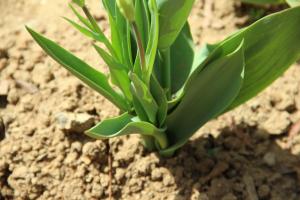How Deep Can I Plant Water Lilies?
Water lilies are one of the most popular aquatic plants that you can grow in your pond or water garden. Not only do they add a touch of beauty to your water feature, but they also help to improve the quality of the water by oxygenating it and providing a natural habitat for fish, frogs, and other aquatic creatures.
Why Plant Water Lilies?
Water lilies are an excellent choice for both novice and expert water gardeners alike. They are a popular choice because they are easy to care for, and they come in a variety of colors, sizes, and shapes. These plants also provide important benefits to the ecosystem of your pond, serving as a natural filter for contaminants and impurities in the water.
How Deep Should You Plant Water Lilies?
The depth at which you should plant your water lilies will depend on the species and the size of the plant that you have. In general, water lilies should be planted at a depth of 18 to 24 inches (45 to 60 cm) below the surface of the water. However, some varieties may require deeper or shallower planting depths.
It's important to take into consideration the size of the water lily when deciding on a planting depth. Large water lilies will require deeper planting depths to support their root system, while smaller varieties can thrive in shallower water.
What Are the Benefits of a Correct Planting Depth?
Planting your water lilies at the correct depth is important for several reasons. By planting at the right depth, you can ensure that the plant has access to the nutrients it needs to grow and thrive. A proper planting depth will also help to protect the plant from fluctuating water temperatures and high winds, which can damage the leaves and stems of the plant.
Additionally, maintaining a consistent planting depth can help prevent your water lilies from becoming overgrown and overcrowded, which can lead to a decline in their overall health and appearance.
How Do You Plant Water Lilies?
When planting water lilies, you should use a planting basket that is typically made of plastic. This basket should have plenty of drainage holes to allow for proper water circulation and nutrient absorption. Fill the basket with a mixture of aquatic soil and fertilizer, and then place the water lily in the basket so that the growth tip of the plant is pointing upwards.
After the plant is in the basket, fill the remaining space with more soil, and then add a layer of gravel on top to help anchor the plant in place. Gently place the basket at the right depth, and then add water to the pond so that the plant is submerged up to its recommended planting depth.
Conclusion:
Planting water lilies is a simple and enjoyable way to create a beautiful and functional water garden. By planting your water lilies at the proper depth and caring for them properly, you can enjoy their beauty and the benefits they provide to your pond or water feature for years to come.

 how many times do yo...
how many times do yo... how many planted tre...
how many planted tre... how many pine trees ...
how many pine trees ... how many pecan trees...
how many pecan trees... how many plants comp...
how many plants comp... how many plants can ...
how many plants can ... how many plants and ...
how many plants and ... how many pepper plan...
how many pepper plan...































